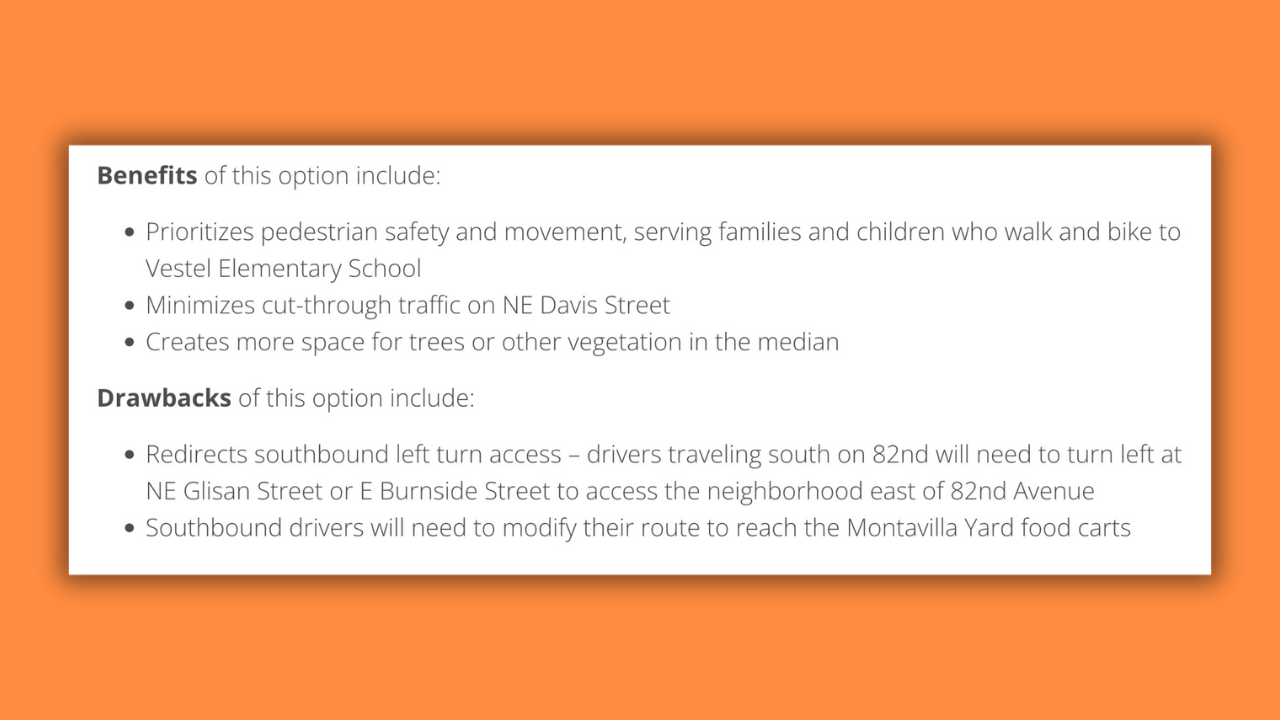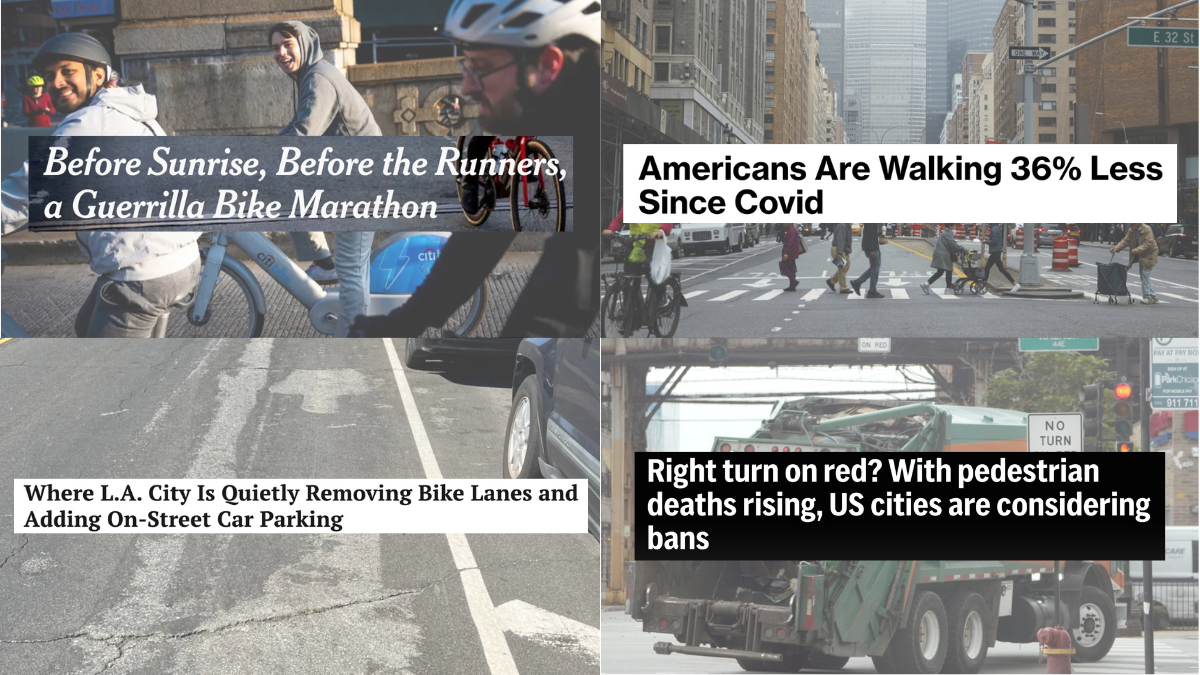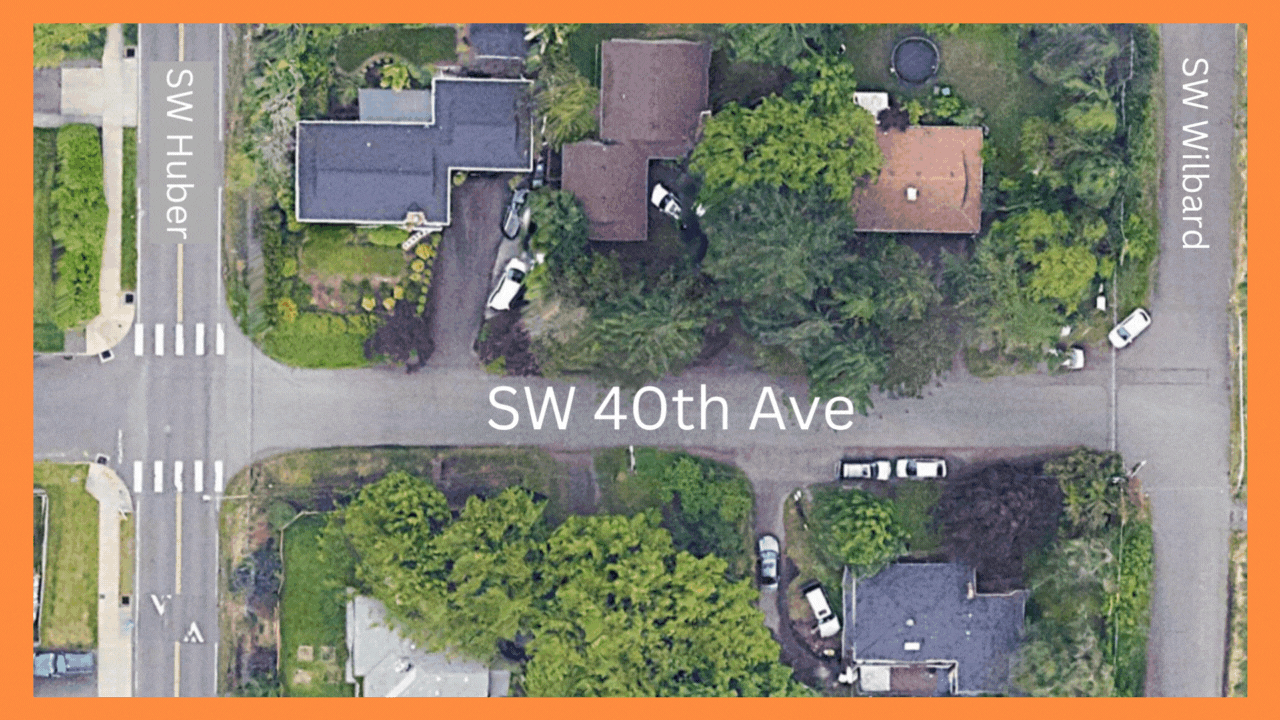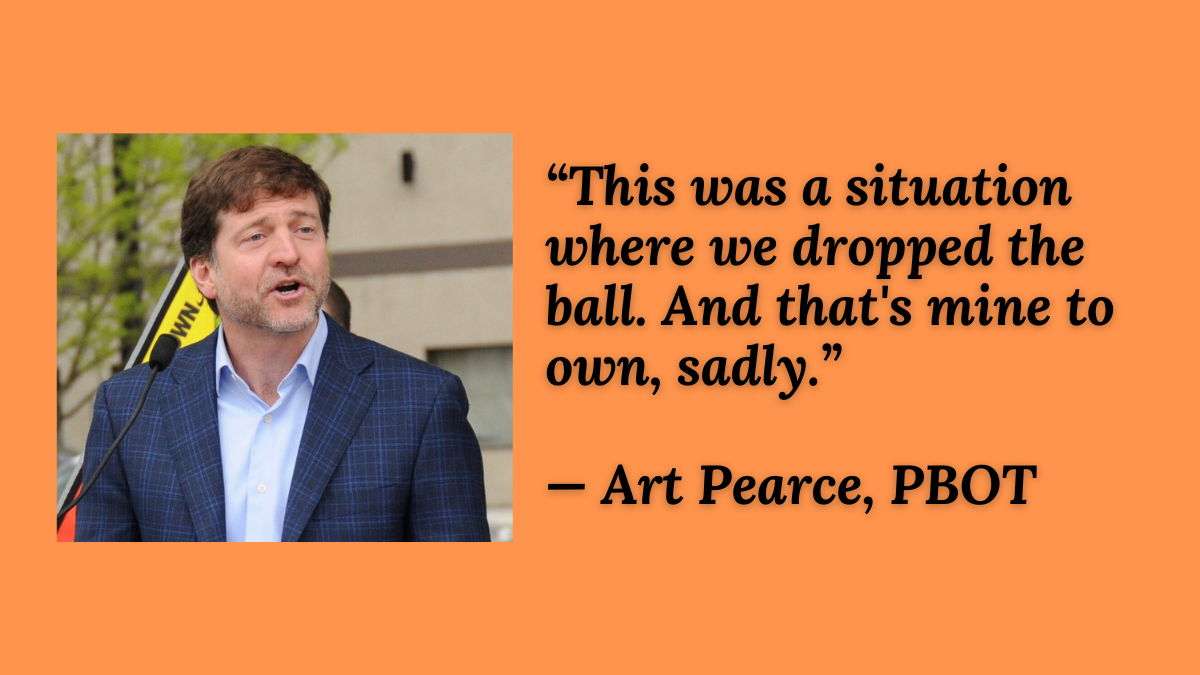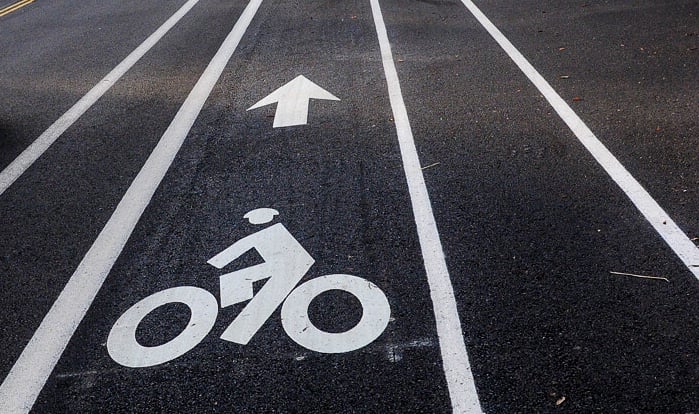As part of a $185 million jurisdictional transfer with the Oregon Department of Transportation completed in April 2022, the City of Portland is hard at work transforming 82nd Avenue from a deadly, state-run stroad into a tamer, safer “civic corridor.” Part of that work requires the Portland Bureau of Transportation to weigh public opinion on convenient driving with our city’s adopted goals for zero traffic deaths and a “Safe System” approach to road design.
The current projects on the table are traffic signal rebuilds on NE 82nd at Glisan and Davis that will come with ADA upgrades at the corners, concrete medians to manage car traffic, and other changes aimed at improving safety. These intersections (just one block apart) are important to the community because they’re adjacent to Vestal Elementary School, Montavilla Park and several popular businesses.
To help guide the final design, PBOT is seeking public feedback via an online survey open through the end of this month. City staff also attended a meeting of the Montavilla Neighborhood Association Monday evening (if anyone attended, we’d love to hear how it went). These proposals are part of what PBOT refers to as the 82nd Avenue Critical Fixes — a list of projects funded by $80 million in federal pandemic relief grants that must be spent the end of 2026. PBOT has described this as a “lightning fast” timeline for them to identify, design, engineer, and build the projects.
So… why is PBOT focusing on Glisan and Davis?
In 10 years of crash data (2012 to 2021) PBOT found that there were 236 collisions within this two block section of 82nd. Two people died and 8 people suffered serious injuries as a result of those collisions. 86% of the serious and fatal crashes involved people who did not comply with the traffic signal. This is typical behavior on a five-lane stroad where cars and their drivers dominate the landscape.
Seven of these collisions resulted in 8 serious injuries and 2 deaths. Both of the fatal collisions involved a vehicle and a pedestrian, and both occurred at signalized intersections – one at Glisan and the other at Davis. PBOT found that 86 percent of serious injuries and fatal crashes involved travelers who disregarded their signal. In 2023, a third person was killed in a crash where the victim was crossing Glisan in a wheelchair.
In addition to new signals, PBOT’s proposed design solutions (see them below) include concrete medians that aim to reduce left-turn crashes. PBOT’s analysis found that drivers making left turns are a common source of injury crashes near 82nd and Glisan. “The proposed traffic separators and medians on NE 82nd Avenue will reduce or eliminate the risk of these crashes,” PBOT said in the survey.
Even with their Vision Zero goal and clear data on turn risks, PBOT is trying to balance safety with accessibility for drivers who want to turn into adjacent businesses without going too far out of their way.
The city’s draft design for 82nd and Glisan (above left) includes a concrete median and “traffic separator” for about 250-feet north and south of the intersection. South of the intersection, they are proposing a gap in the median so northbound drivers can turn left into a car wash business.
There’s a similar auto access compromise being proposed south of Glisan at the T-intersection with NE Davis. PBOT wants to build a concrete median across the entire width of the front of Vestal Elementary School (about 300 feet from NE Everett to just north of Couch). PBOT is showing the public two options: One without a break in the median at Davis (above center), and one with a break in the median (above right).
According to PBOT, benefits of the continuous median are that it prioritizes the safety of families and children who walk and bike to Vestal, minimizes cut-through traffic on Davis, and creates more space on the median for street trees. The “drawbacks” are that drivers would have to take a different route into a nearby food cart and would have to travel a few extra blocks to get to homes in the neighborhood just east of 82nd.
Because of those “drawbacks” PBOT is also proposing a design option that has a 40-foot gap in the median so drivers’ access to Glisan will not be changed.
If you’re wondering why a city ostensibly committed to Vision Zero and a Safe Systems approach to road design is willing to sacrifice safety for driving convenience, keep in mind what PBOT just went through two miles east of NE 82nd and Glisan on SE Division Street.
PBOT faced withering criticism from business owners and other activists who said the median hurt businesses and made it inconvenient and unsafe to drive. People opposed to the median testified numerous times at city council, were the focus on several local media stories, blamed PBOT for inadequate public outreach, and garnered the ear of PBOT Commissioner Mingus Mapps and Commissioner Dan Ryan. Ultimately, PBOT returned to Division back in September with a demo crew and punched a hole in the median outside the business of the person who led fight against the median.
Suffice it to say, PBOT doesn’t want to repeat that episode on 82nd Avenue.
You can help them make a good decision by taking the online survey. It’s open through November 30th. Once a design is chosen, construction will start in 2025 and the project should be done by 2026.



